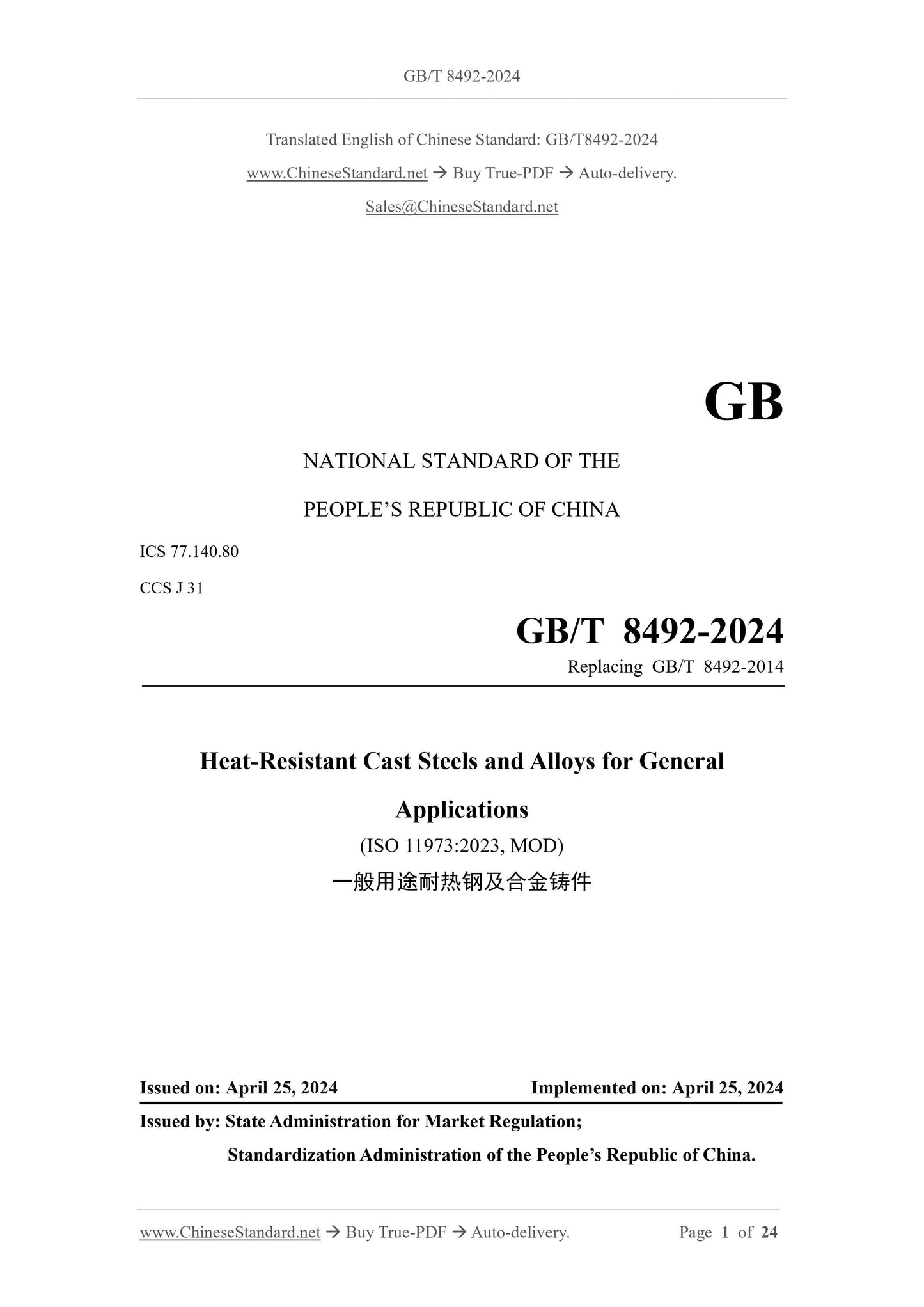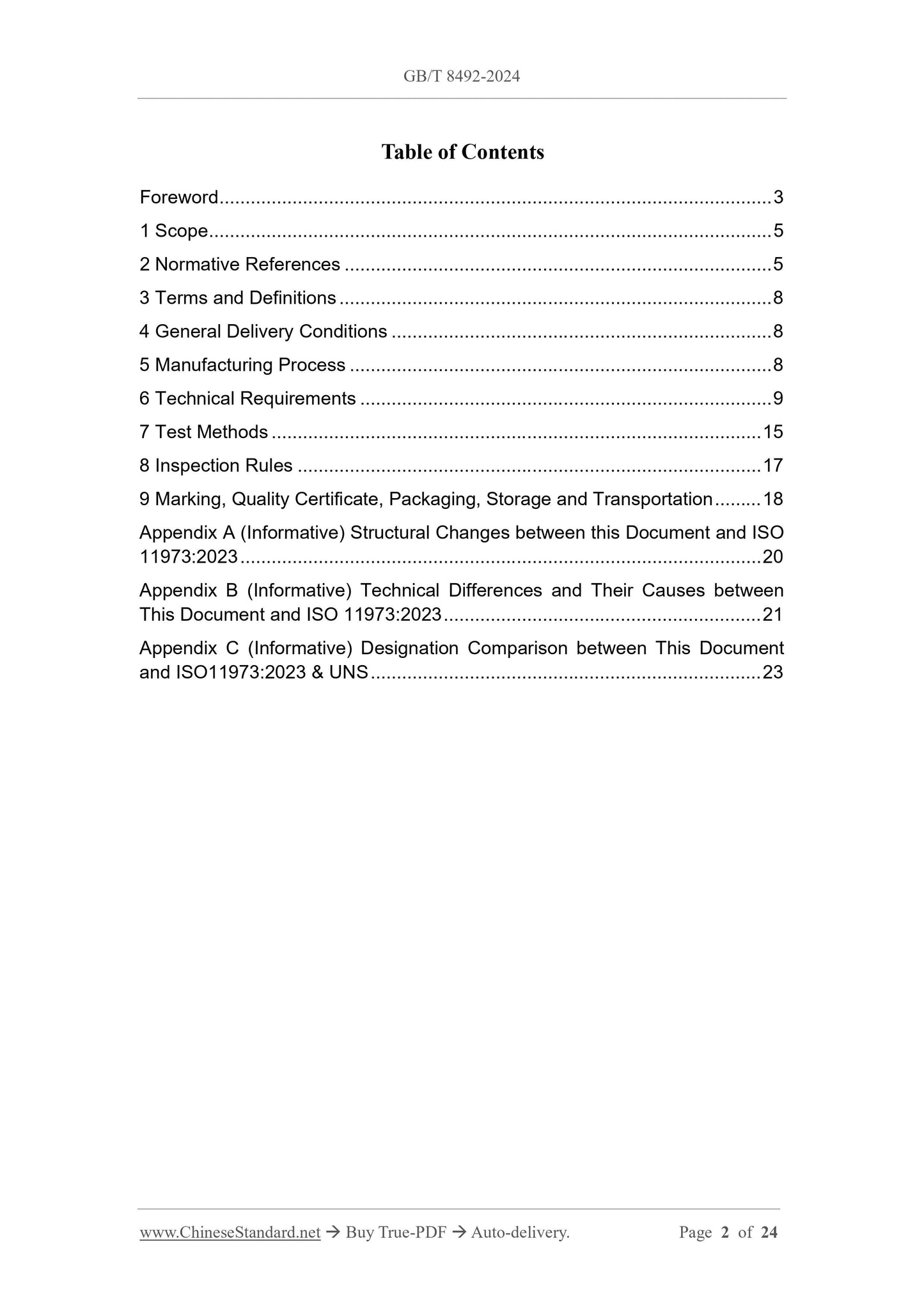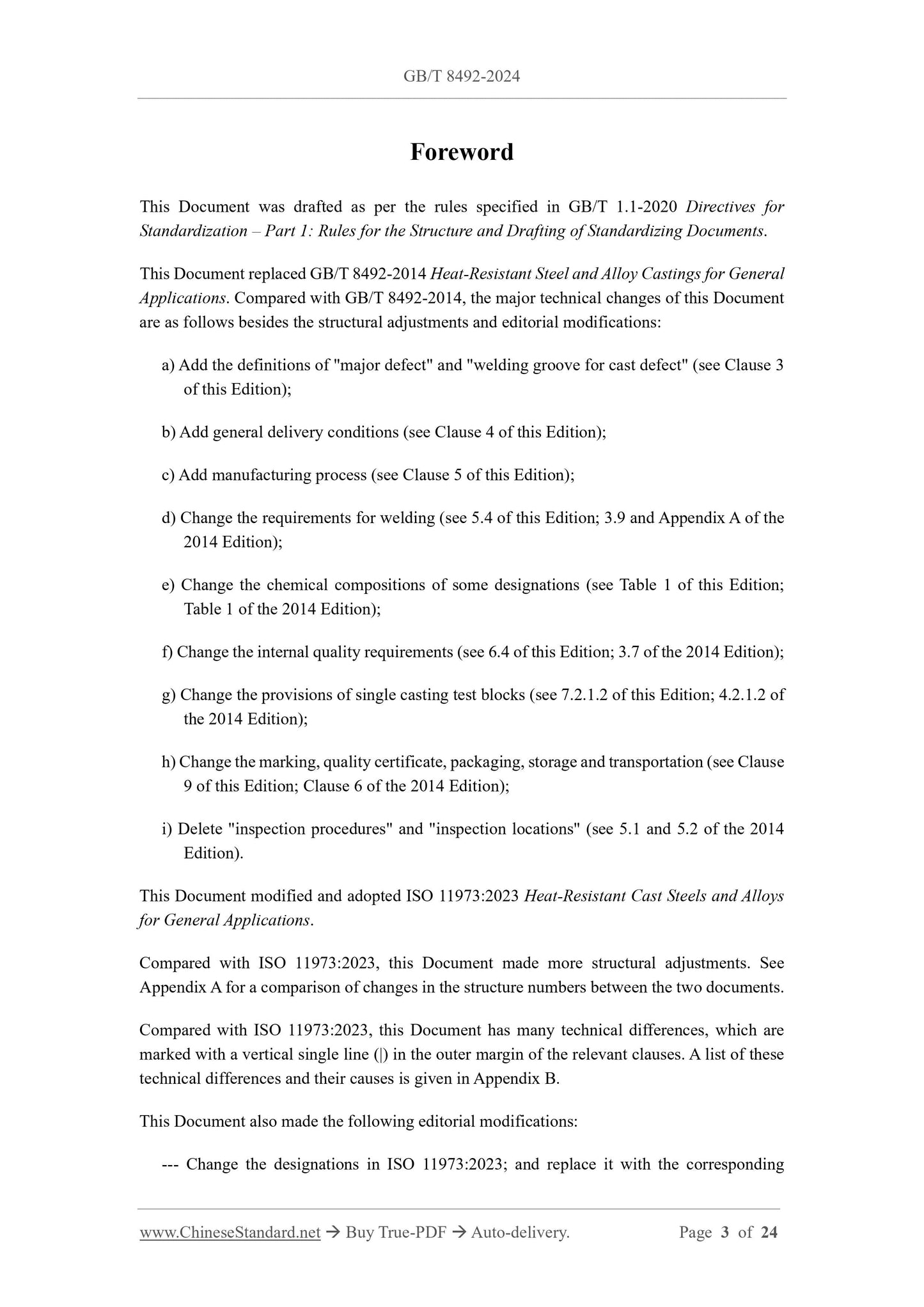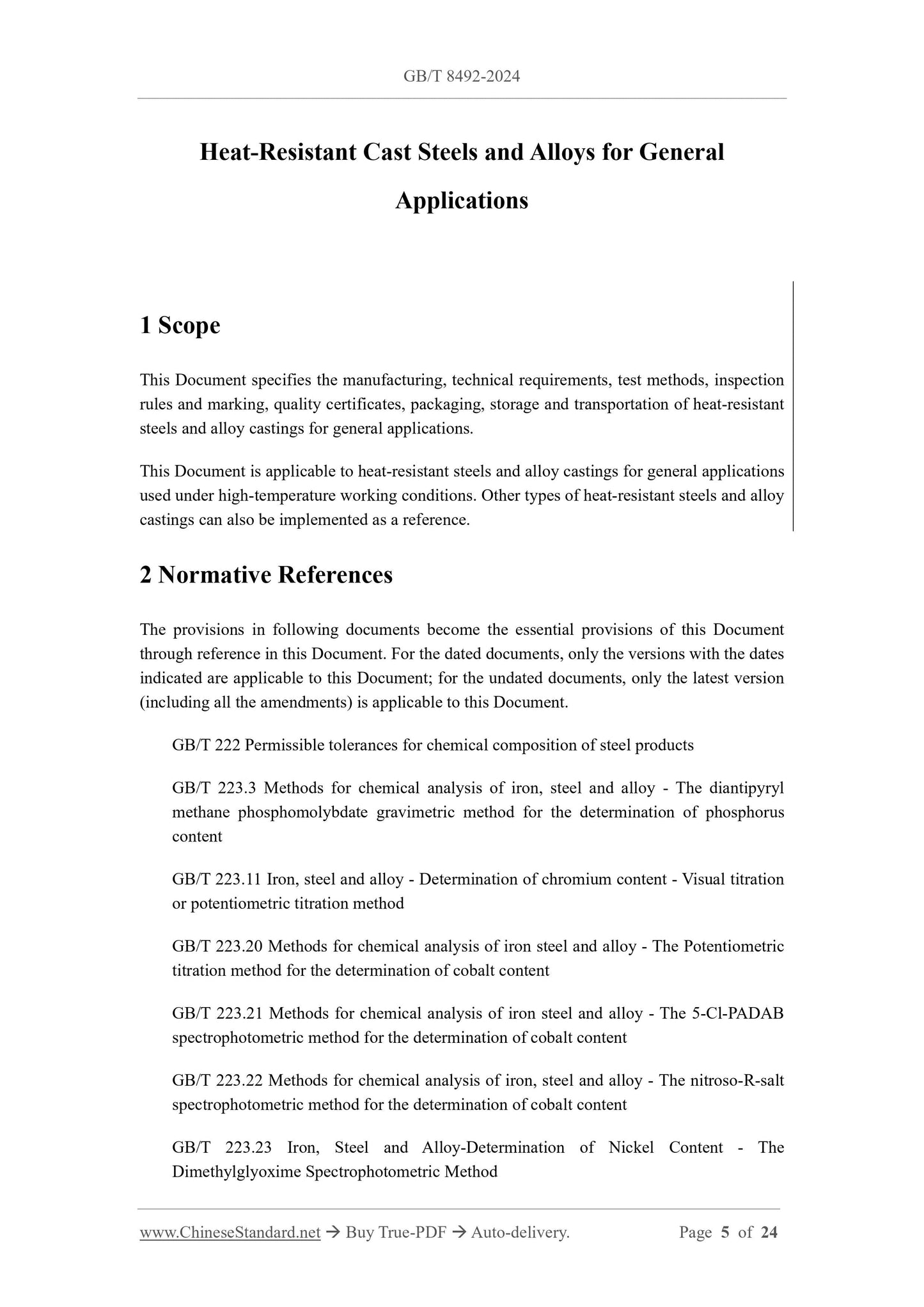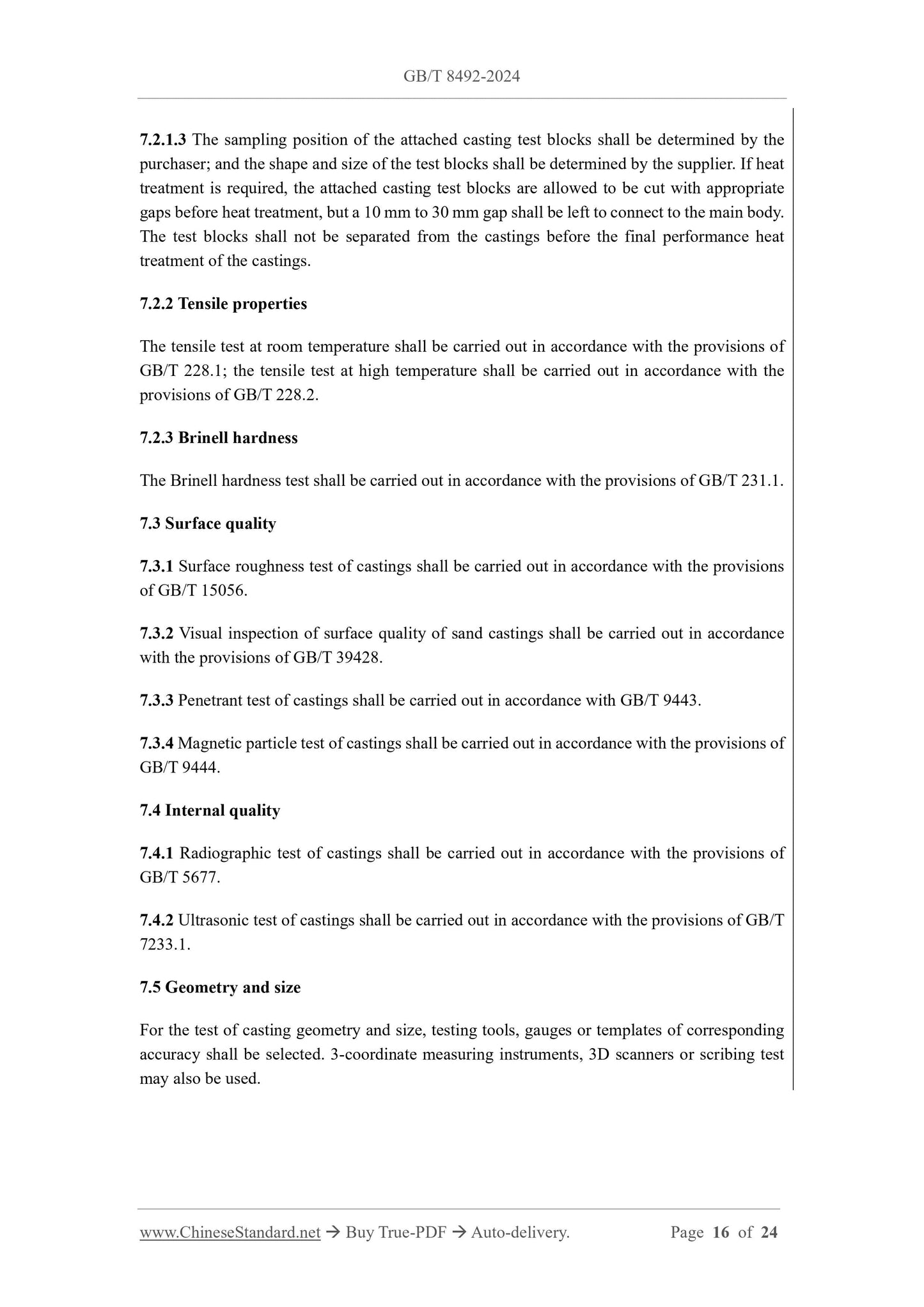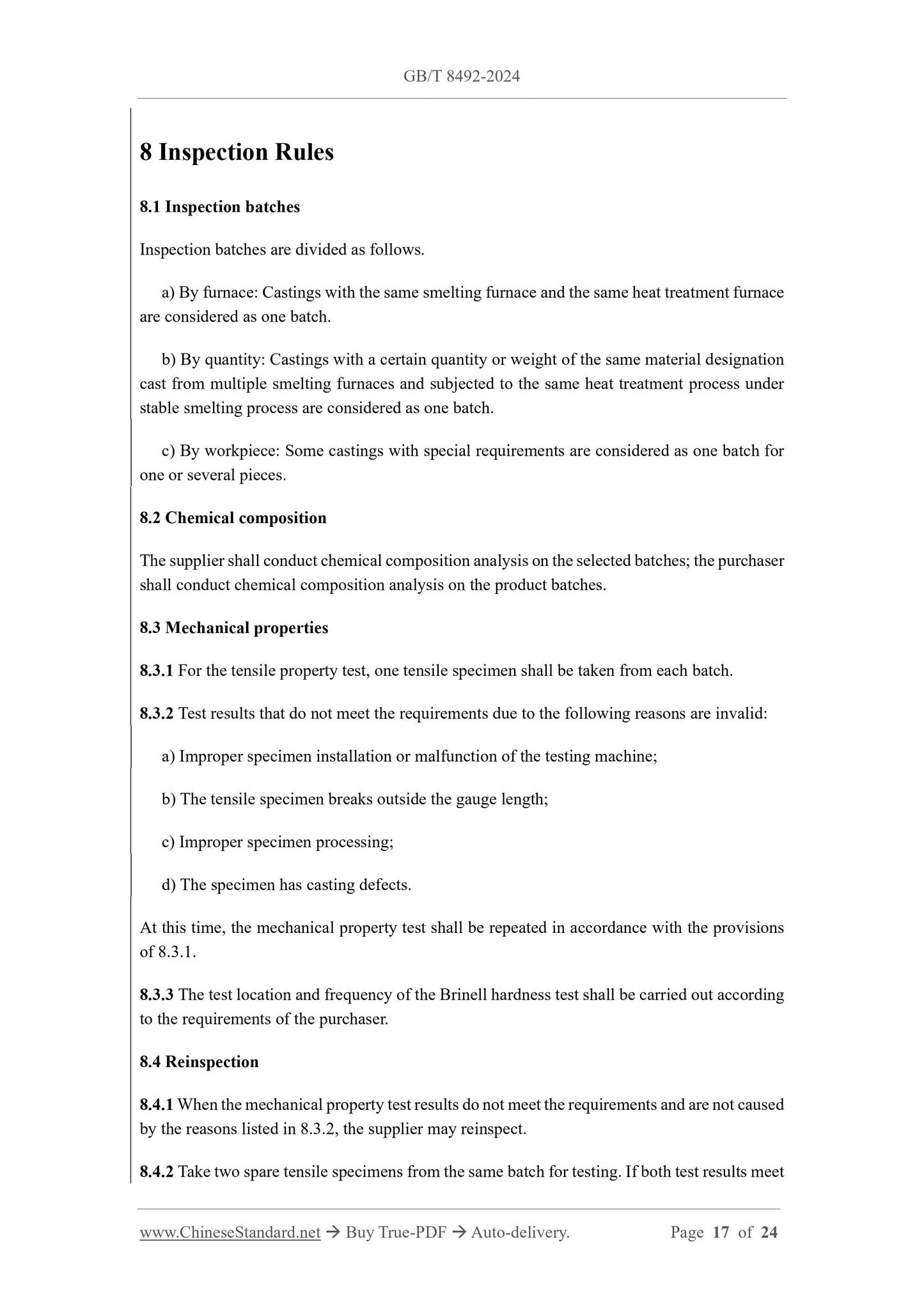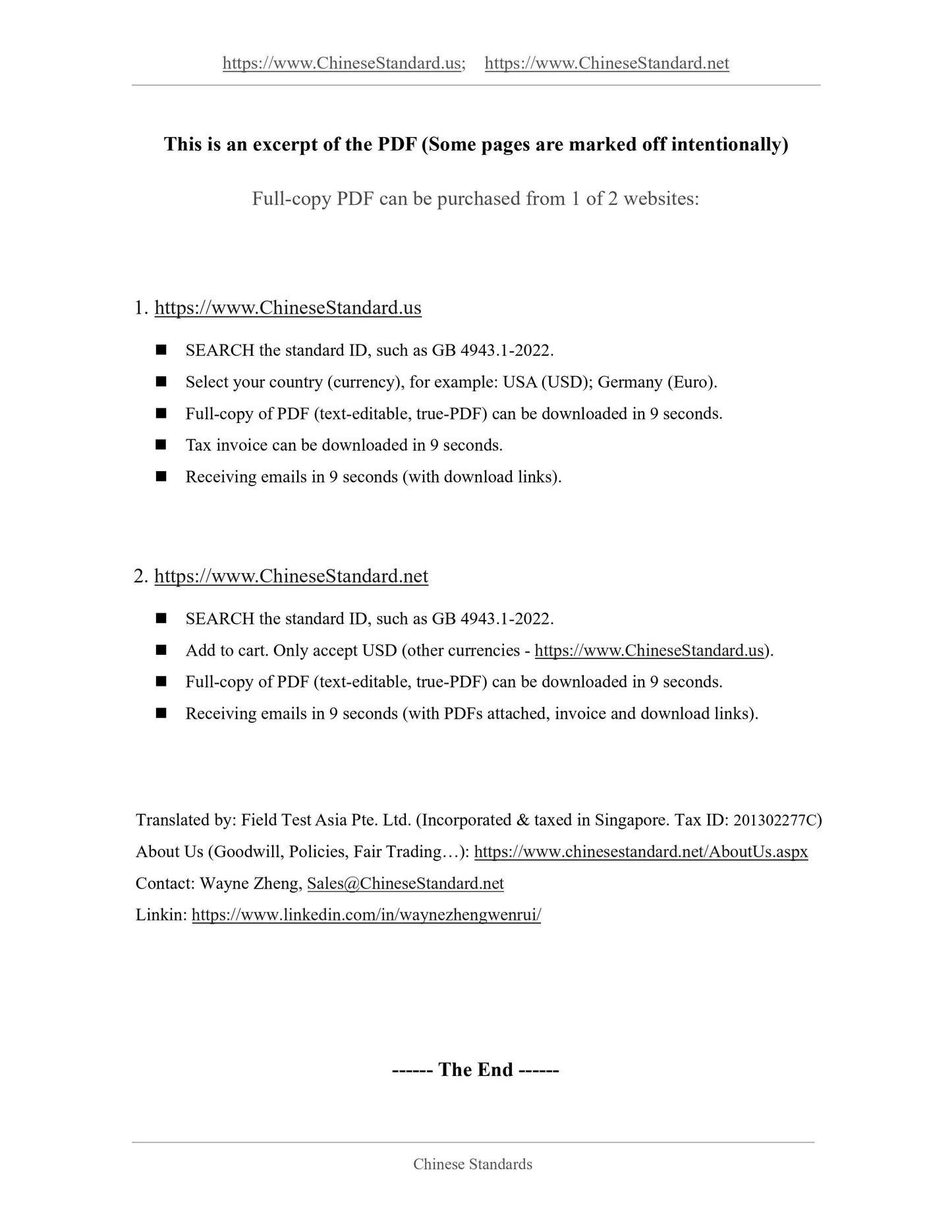1
/
of
7
www.ChineseStandard.us -- Field Test Asia Pte. Ltd.
GB/T 8492-2024 English PDF (GB/T8492-2024)
GB/T 8492-2024 English PDF (GB/T8492-2024)
Regular price
$290.00
Regular price
Sale price
$290.00
Unit price
/
per
Shipping calculated at checkout.
Couldn't load pickup availability
GB/T 8492-2024: Heat-resistant cast steels and alloys for general applications
Delivery: 9 seconds. Download (and Email) true-PDF + Invoice.Get Quotation: Click GB/T 8492-2024 (Self-service in 1-minute)
Newer / historical versions: GB/T 8492-2024
Preview True-PDF
Scope
This Document specifies the manufacturing, technical requirements, test methods, inspectionrules and marking, quality certificates, packaging, storage and transportation of heat-resistant
steels and alloy castings for general applications.
This Document is applicable to heat-resistant steels and alloy castings for general applications
used under high-temperature working conditions. Other types of heat-resistant steels and alloy
castings can also be implemented as a reference.
Basic Data
| Standard ID | GB/T 8492-2024 (GB/T8492-2024) |
| Description (Translated English) | Heat-resistant cast steels and alloys for general applications |
| Sector / Industry | National Standard (Recommended) |
| Classification of Chinese Standard | J31 |
| Classification of International Standard | 77.140.80 |
| Word Count Estimation | 18,126 |
| Date of Issue | 2024-04-25 |
| Date of Implementation | 2024-04-25 |
| Older Standard (superseded by this standard) | GB/T 8492-2014 |
| Issuing agency(ies) | State Administration for Market Regulation, China National Standardization Administration |
Share
